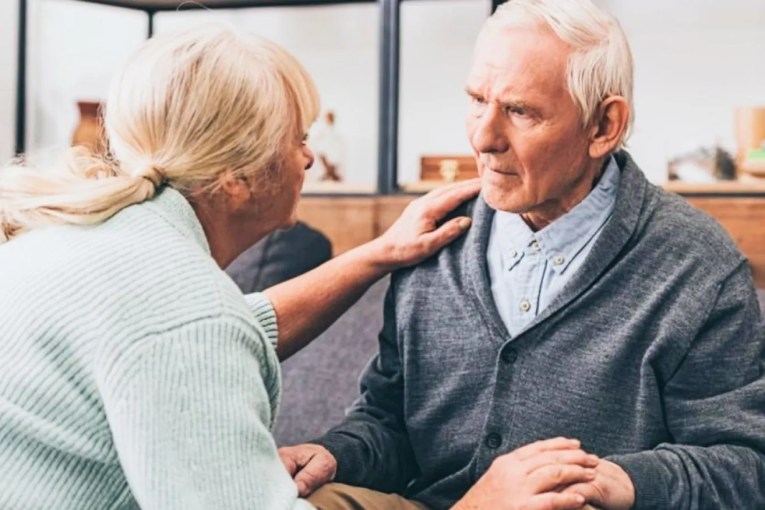Should you remove your ovaries?


Jolie, who has six kids, will not be able to have any more children of her own.
Over the space of two years, Hollywood actress Angelina Jolie has had her breasts, ovaries and fallopian tubes removed in an effort to save herself from the same fate as her mother, grandmother and aunt.
To anyone reading the 39-year-old’s story (shared in two separate op-eds for The New York Times), her decision seems brave, if not a little over zealous.
• Angelina Jolie: why I had my ovaries removed
• Actress Angelina Jolie hails her miracle man
Dr Alison Brand, gynaecological oncologist and Chair of the Australia and NZ Gynaecological Oncology Group, cautions against assuming Jolie’s case is a common one.
“Angelina Jolie is but a small part of the population of women that get ovarian cancer,” Dr Brand explains.
“She has an inherited fault in one of her genes that makes her more prone. That inherited defect is in her BRCA gene, which we all have. That defect affects only 10 per cent of women who have ovarian cancer.
“Everything that happened to Angelina Jolie does not apply for all women.”
In a piece titled ‘Angelina Jolie Pitt: Diary of a Surgery’, Jolie wrote how she was forced to take action after receiving unfavourable test results.
“I went through what I imagine thousands of other women have felt. I told myself to stay calm, to be strong, and that I had no reason to think I wouldn’t live to see my children grow up and to meet my grandchildren,” she wrote.
It’s all food for thought, but should you or the women in your life be doing more than just read Jolie’s articles?
Here’s what you need to know.
What are the BRCA1 and BRCA2 genes?
The BRCA1 and BRCA2 genes produce tumour suppressor proteins, repair damaged DNA and ensure stability in a cell’s genetic material.
If they are mutated, DNA damage might not be repaired, increasing the risk of cancer.
Women who inherit a faulty BRCA1 gene have approximately a 40 per cent lifetime risk of developing ovarian cancer, while women who inherit a faulty BRCA2 gene have approximately a 10-15 per cent risk of developing ovarian cancer.
Should I get tested? What does it involve?
First of all, it’s worth noting that ovarian cancer is not an illness that is easy to detect or anticipate.
“Unlike cervical cancer which has a very good screening test (the pap smear), there is no test for ovarian cancer,” Dr Brand explains.
“The signs are often very vague and most women will not know they have ovarian cancer until the disease is very advanced. Only 25-30 per cent of patients diagnosed at late stages will live more than five years.”

Jolie, who has six kids, will not be able to have any more children of her own.
Furthermore, testing for the BRCA gene isn’t exactly common, nor is it straightforward.
“The test involves taking blood from an affected person,” Dr Brand explains.
So, you have to have an affected family member around to determine your risk.
In the case of Jolie, “I suspect what happened is her mother was tested and because they found something in her mother she was tested with a predictive test”, Dr Brand says.
A predictive test can then help the doctor hone in on where there could be a fault on the DNA.
I think I have a family history, what should I do?
If you’re concerned, Dr Brand suggests heading to your GP as your first port of call.
“If they have a strong family history of breast and/or ovarian cancer the next step would be to see their GP and ask about their risk,” Dr Brand says.
“If their GP feels that there is a chance this might be a familial thing then they will refer her to any one of the familial cancer clinics that exist in most major hospitals.
“They will then be seen by a genetic physician who will be able to ascertain their risk a little bit more clearly and identify if there was a family member to test.”
Other than that, diagnosis of ovarian cancer is symptomatic.
What does surgery involve? How much does it cost?
Removing the ovaries is both a form of prevention and treatment for ovarian cancer.
As Jolie says in her article, she still hasn’t removed her risk of developing ovarian cancer completely.
“It reduces the risk by about 90 per cent,” Dr Brand explains, adding that this is a high enough decrease to justify the surgery.
“Angelina had a keyhole removal of her tubes and ovaries so that would be day surgery only and recuperation would be two weeks, but many could go back and do a desk job if they felt up to it,” Dr Brand says.
“Because they produce the female hormones, removal of the ovaries does put the woman into menopause.
“However, many physicians would be very comfortable giving patients hormone replacement therapy to cancel out the menopausal symptoms.”
What are some other warning signs?
For those with no family history, there are some factors that can increase your risk of developing ovarian cancer:
• Ageing (risk increases for women over 50).
• Being of Northern European or Northern or Ashkenazi Jewish descent.
• Early onset of periods (before 12 years) and late menopause.
• Childlessness.
• Infertility.
• Having your first child after 30.
• Never taking oral contraceptives.
• Using oestrogen-only hormone replacement therapy or fertility treatment.








